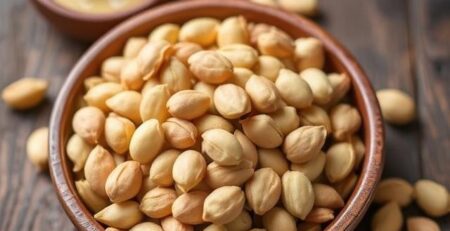Is Red Wine an Alcoholic Beverage?
Exploring Red Wine Alcohol Content, Production, and Responsible Enjoyment
Red wine has long been celebrated for its rich flavors, cultural significance, and potential health benefits. Yet, a common question persists among new wine drinkers and enthusiasts alike: Is red wine an alcoholic beverage? The answer is straightforward—yes, red wine is an alcoholic beverage. This article delves deep into what makes red wine alcoholic, the range of alcohol content found in red wines, how it’s produced, its effects on health, and tips for enjoying red wine responsibly.
What Makes a Beverage Alcoholic?
A beverage is considered alcoholic if it contains ethanol (commonly known as alcohol), which is produced through fermentation. In the case of wine, yeast consumes the natural sugars in grape juice and converts them into alcohol and carbon dioxide. The resulting drink’s alcohol content is typically measured as Alcohol by Volume (ABV), expressed as a percentage.
Red Wine Alcohol Content: The Numbers
Typical ABV Range
- Red wine typically contains between 12% and 15% ABV, with an average around 13.5%.
- Some red wines can be as low as 10% or as high as 20% ABV, though these are less common.
- For comparison, most beers range from 4% to 7% ABV, while spirits like vodka or whiskey are usually 40% ABV or higher.
| Wine Type | Typical ABV (%) |
|---|---|
| Light-bodied Red (e.g., Pinot Noir) | 12.0–13.0 |
| Medium-bodied Red (e.g., Merlot) | 13.0–14.5 |
| Full-bodied Red (e.g., Cabernet Sauvignon, Shiraz) | 14.5–16.0+ |
| Fortified Wines (e.g., Port, Sherry) | 15.5–25.0 |
Key Point:
Red wine is, by definition, an alcoholic beverage due to its ethanol content.
How Is Red Wine Made? The Role of Fermentation
The Winemaking Process
Red wine is made from dark-colored grape varieties. The process involves:
- Harvesting: Grapes are picked, often at peak ripeness for higher sugar (and thus higher potential alcohol).
- Crushing and Fermentation: Grapes are crushed, and the juice is left in contact with skins (for color and tannins). Yeast is added (or allowed to occur naturally), converting sugar to alcohol.
- Aging: Wine is aged in barrels or tanks, which can influence flavor and texture.
- Bottling: The finished wine is filtered and bottled.
The amount of sugar in the grapes and the length of fermentation determine the final alcohol content.
Why Does Red Wine Have More Alcohol Than White Wine?
- Red wines are often made from riper, late-harvest grapes, which have higher sugar content. More sugar means more potential alcohol after fermentation.
- Red wines generally have higher ABV than white wines, which often use less ripe grapes and may have shorter fermentation.
Red Wine Varieties and Their Alcohol Content
Here’s a look at some popular red wine types and their typical alcohol content:
| Red Wine Variety | Typical ABV (%) |
|---|---|
| Pinot Noir | 12.0–13.5 |
| Merlot | 13.0–14.5 |
| Cabernet Sauvignon | 14.0–15.5 |
| Shiraz/Syrah | 14.5–16.0 |
| Zinfandel | Up to 16.0 |
| Grenache | 13.5–15.5 |
| Port (Fortified) | 18.0–20.0 |
Note: Fortified wines like Port or Sherry have spirits added, boosting their ABV significantly.
Alcohol Content and Wine Labels
- ABV is always listed on the wine bottle label.
- By law, the actual ABV can be up to 1.5% higher or lower than stated, depending on local regulations.
How Does Alcohol Content Affect Red Wine?
Flavor and Body
- Higher alcohol wines tend to feel fuller-bodied and have a warming sensation.
- Lower alcohol wines are lighter, often more refreshing, and sometimes sweeter if fermentation is stopped early.
Food Pairing
- High-ABV red wines pair well with rich, hearty dishes (e.g., steak, barbecue).
- Lower-ABV reds are better with lighter fare or as aperitifs.
Is Red Wine Healthier Than Other Alcoholic Drinks?
Moderate Consumption and Health
Some studies suggest moderate red wine consumption may offer health benefits, primarily due to antioxidants like resveratrol. However, the key is moderation—excessive alcohol intake is harmful regardless of the beverage.
What Is Moderate Drinking?
- For healthy adults, moderate drinking is generally defined as:
- Up to one glass per day for women
- Up to two glasses per day for men
- A standard glass of wine is typically 5 oz (about 150 ml) at 12% ABV.
Important: Health guidelines vary by country, and some individuals should avoid alcohol entirely.
Responsible Enjoyment: Tips for Drinking Red Wine
- Know Your Limits: Understand how much alcohol you’re consuming by checking the ABV.
- Eat While Drinking: Food slows alcohol absorption and enhances wine enjoyment.
- Hydrate: Drink water alongside wine to stay hydrated.
- Don’t Drink and Drive: Never operate vehicles or machinery after drinking alcohol.
Frequently Asked Questions
Is red wine an alcoholic beverage?
Yes, red wine is an alcoholic beverage. Its alcohol content typically ranges from 12% to 15% ABV, making it stronger than beer and most white wines.
Can you get drunk from red wine?
Yes. The ethanol in red wine can cause intoxication if consumed in sufficient quantities, just like any other alcoholic beverage.
Is there non-alcoholic red wine?
Yes, some producers make dealcoholized red wine, which has had most of the alcohol removed. These products typically contain less than 0.5% ABV and are labeled as “non-alcoholic.”
Does red wine have more alcohol than beer?
Generally, yes. Most beers are 4–7% ABV, while most red wines are 12–15% ABV.
The Bottom Line
Red wine is an alcoholic beverage—its alcohol content is a defining characteristic, resulting from the fermentation of grape sugars. The typical ABV for red wine ranges from 12% to 15%, though some styles can be lower or higher. Understanding red wine alcohol content helps you make informed choices about what you drink, how much you consume, and how to enjoy wine responsibly.
Whether you’re a casual wine drinker, a connoisseur, or simply curious, knowing the facts about red wine alcohol content ensures you can appreciate this iconic beverage safely and knowledgeably.












